June 4, 2025 | 17:11 GMT +7
June 4, 2025 | 17:11 GMT +7
Hotline: 0913.378.918
June 4, 2025 | 17:11 GMT +7
Hotline: 0913.378.918
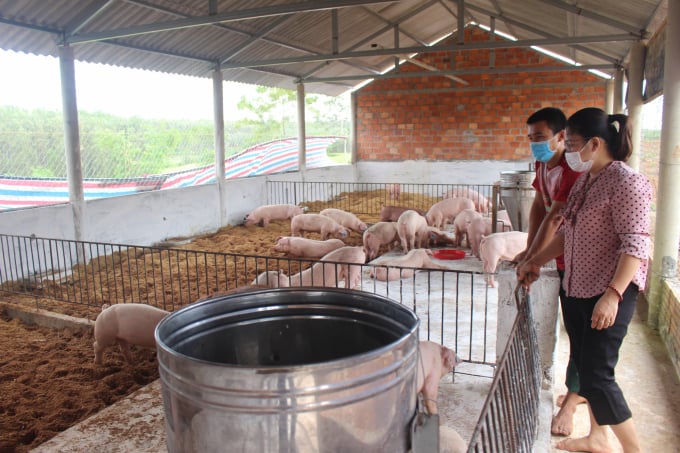
The model of raising organic pigs in Cam Nghia Commune. Photo: Viet Toan.
Quang Tri Agricultural Extension Centre has deployed the model of raising organic pigs towards bio-security livestock.
The move came after local breeders have meet difficulties in re-herding pigs in the period of 2021-2025 while local pigs were attacked by African swine fever in recent years.
The model that links production and consumption brings safe and hi-quality products to the market to serve consumers.
The model has been deployed in the whole province with the participation of 11 households with a total of 354 pigs. Each household in the mountainous area will raise 30 pigs while each household in the delta area will raise 42 pigs.
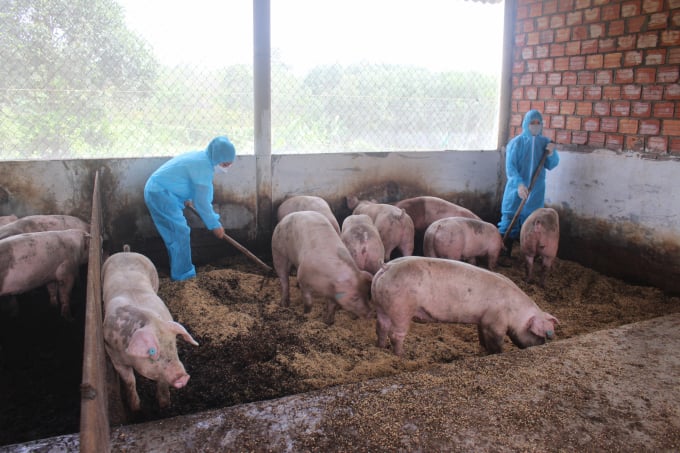
Thanks to biological pads, farmers have solved many environmental problems, reducing labour and production costs. Photo: Viet Toan.
The pigs, which are crossbred from three varieties of pigs of Landrace Yorkshire and Duroc, have high quality and being popularly and widely raised in the province.
The households have received financial supports of 50 per cent if they locate in the delta area and 70 per cent if they locate in the mountainous area.
Le Thanh Tung, a staff of the centre, said that the households participating in the model were guided by the technical staff on how to raise organic pigs towards bio-security livestock.
During the implementation process, the households applied synchronously the technical measures on bio-security livestock issued by the Ministry of Agriculture and Rural Development, from building barns on biological pads, using misting system, cooling fan, mixing and incubating food with probiotics, keeping hygiene and preventing diseases, he said.
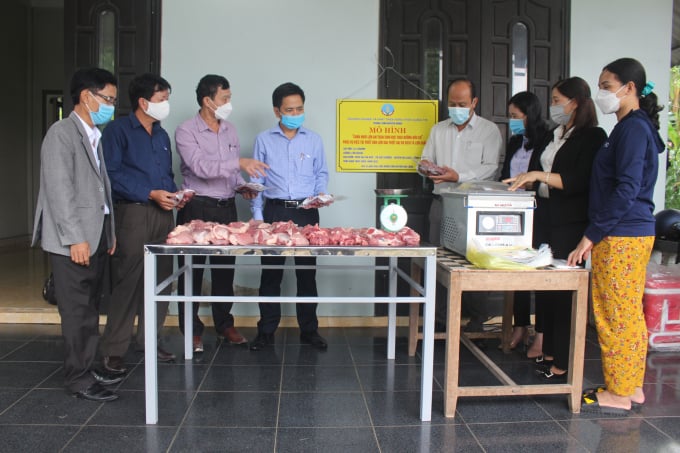
Delegates visit the model in Hai Thuong Commune, Hai Lang District. Photo: Viet Toan.
Under the design of the barn, two third of the barn is arranged to be covered by biological pads that contains microorganisms to decompose pig waste, reducing environmental pollution, stinky smell, toxic air. It does not need to clean up waste and bathe pigs during the raising process, he said.
The model uses self-mixed animal feed from common ingredients. The mixing process, using microbial inoculants, helps to improve the nutritional value of the feed without the use of antibiotics, growth hormone, preservatives and banned substances.
As a result, it has reduced animal feed cost, made it easier for pigs to digest, increased pigs’ resistance and limited gastrointestinal and respiratory diseases.
Nguyen Thi My Hanh, Phuong An 2 Village, Cam Nghia Commune, Cam Lo District, a participant of the model said the implementation of the model helped her in saving water cost and reducing environmental pollution.
Besides, it also reduced labour cost, there was no need to clean up pig manure and bathe pigs, she said.
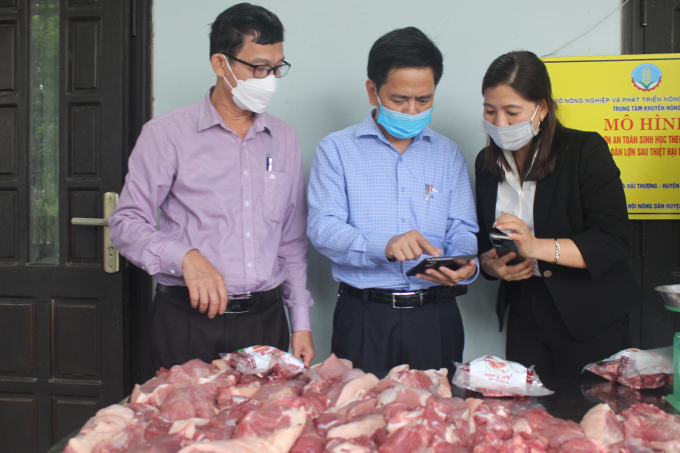
: Scanning the pork’s QR code on smartphone. Photo: Viet Toan.
The important thing is that the model brings a source of clean pork to the people, so we can sell it to the market at a higher price, she said.
Dang Thi Van, Nam Phu Village, Trung Nam Commune, Vinh Linh District said she learned how to build barns, how to mix animal feed from available ingredients without preservatives and how to protect the pigs from diseases in the right way thanks to the model.
Instruction
During the implementation of the model, the COVID-19 pandemic has showed complex developments. Therefore, the centre has set up a Zalo group to instruct the participants to implement the model.
Besides, the centre also sent staff to each household to directly instruct them to comply with the pandemic prevention and control regulations.
Le Thi Be Huong, Vice Chairwoman of Hai Thuong Commune People's Committee, Hai Lang District said after three months of piloting, the model shows that pigs are well adapted to and gain weight quickly. The pigs now reach an average weight of 100 kg per individual.
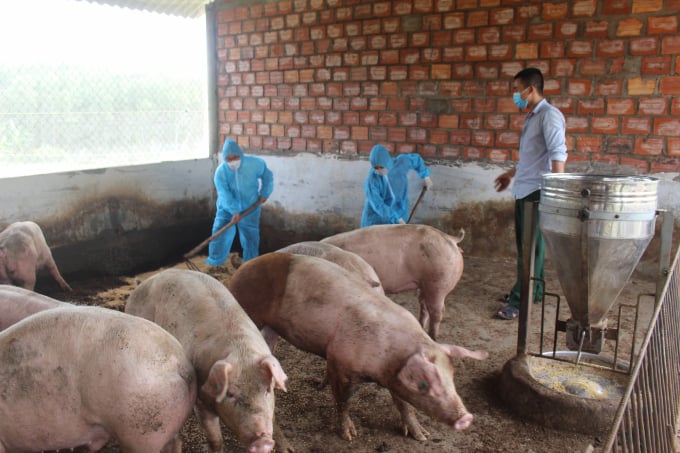
The model will be multiplied widely in the province in the coming time. Photo: Viet Toan.
The samples of pork in the two district have meet standards, ensuring food hygiene and safety under the assessment of pork quality, she said.
The centre has supported breeders with vacuum machines, labeling, and product traceability stamps before the products are put on the market. Consumers can easily check the products’ information by scanning QR codes on smartphones.
The centre has also connected with businesses and stores to help the breeders to quickly sell pork.
Le Song Hao, Deputy Chairman of the People's Committee of Cam Nghia Commune, Cam Lo District said that the committee plans to multiply the model if it still protects the environment, improve the quality and efficiency of the livestock herd in the future.
Tran Can, director of the centre said the implementation of the model will help to better manage the disease and build a disease-free area in the province.
The centre will continue researching and implementing livestock models that link to product consumption, thereby helping households to get acquainted with new husbandry methods, creating safe products and increasing income, he said./
Translated by Thu Hang
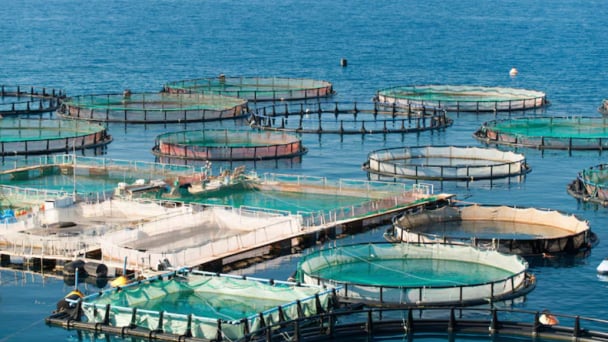
(VAN) Technology is redrawing the map of Vietnamese aquaculture: more modern, greener, and more sustainable.
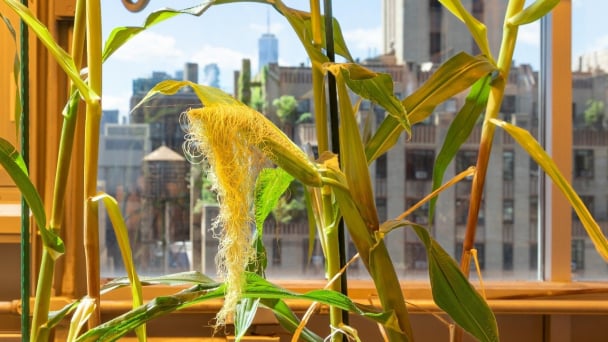
(VAN) Novel process harnesses machine learning to reveal groups of genes that determine how efficiently plants use nitrogen.

(VAN) Several scientists and farmers are experimenting with soil treatment in some key durian-growing regions such as Cai Lay (Tien Giang), Dak Song, Gia Nghia, and Dak R’lap (Dak Nong).
/2025/05/25/4127-3-073637_820.jpg)
(VAN) Thanks to the promotion from an FAO-implemented project, vegetable production in greenhouses in Moc Chau has seen strong development, from 1.5 hectares in 2021 to nearly 50 hectares in 2024.

(VAN) FAO has recently supported USD 140,000 to implement the project 'Risk mitigation human-animal interface risks through disease control initiatives in pig farming.'

(VAN) The People's Committee of Tra Vinh province has approved an adjustment to the investment policy for the Green Hydrogen Plant project, increasing its area to approximately 52.76 hectares.
![Reducing emissions from rice fields: [2] Farmers’ commitment to the soil](https://t.ex-cdn.com/nongnghiepmoitruong.vn/608w/files/news/2025/05/05/dsc08881jpg-nongnghiep-140632.jpg)
(VAN) Clean rice cultivation model in Thuong Tan commune, Bac Tan Uyen district, is assisting local residents in achieving sustainable agriculture by substantially reducing costs, increasing productivity, and protecting the environment.